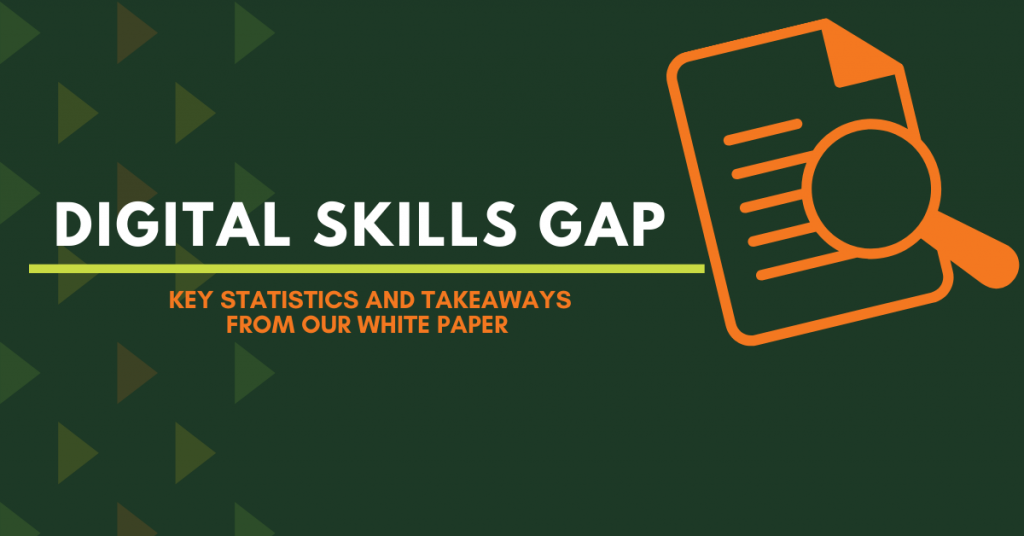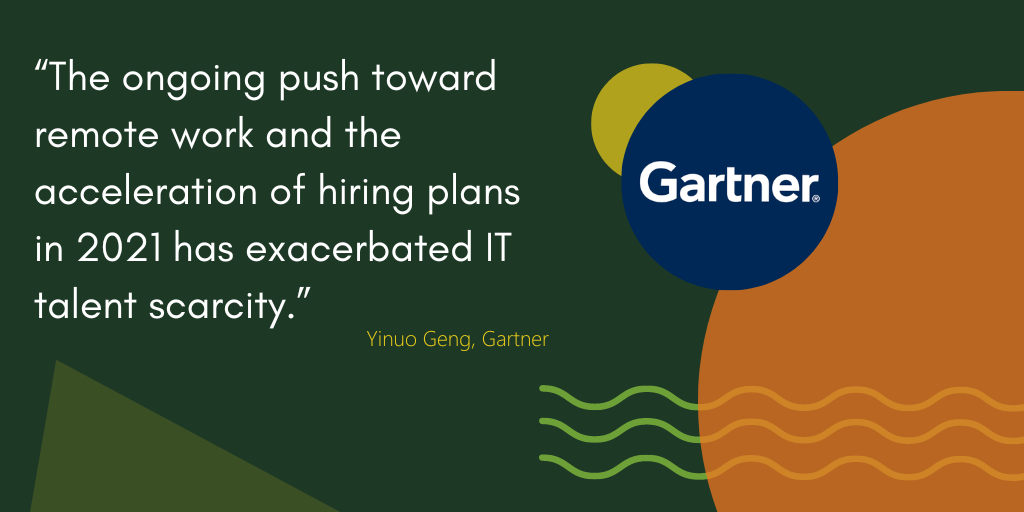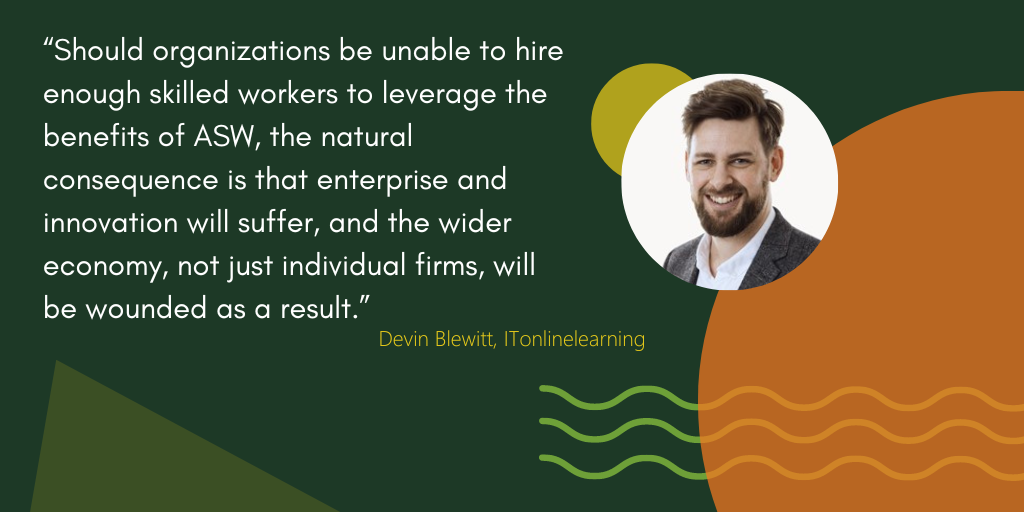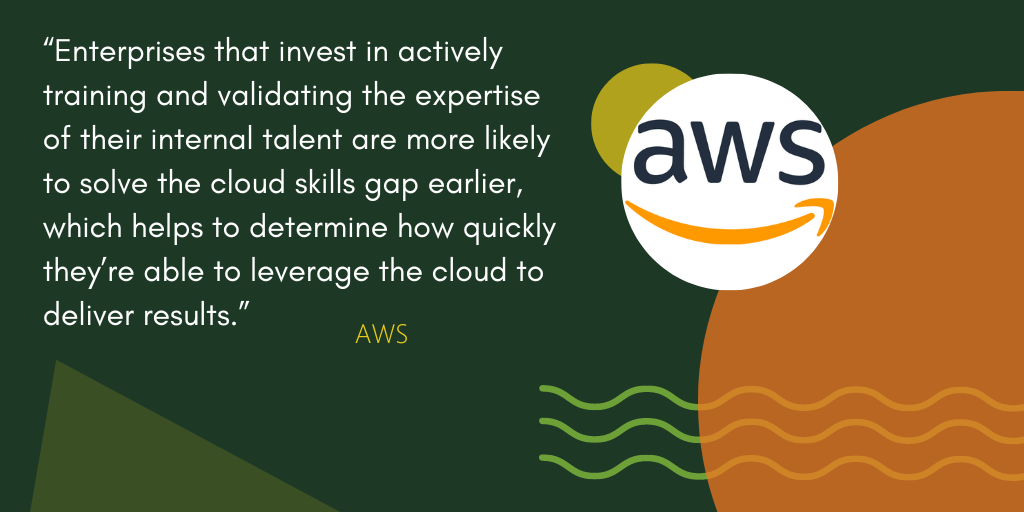
The digital skills gap is one of the biggest issues facing industries across the world today. Posing a unique set of hurdles and closing the skills gap is essential for organizations that need to attract and retain specialist talent to drive their digital transformation.
To help businesses understand the impact that the digital skills gap is having on the hiring market, we recently published a whitepaper investigating how and why closing the skills gap should be a top priority for employers across the AWS community.
Our Overcoming the digital skills gap in AWS white paper features extensive analysis, advice, and best practices from recruitment specialists and industry experts. In this blog post, we’ve hand-picked some of the most important digital skills gap statistics, quotes, and takeaways from the white paper.*
Be sure to download the full white paper for 25 pages of market-leading insight on closing the skills gap in AWS—essential reading for any organization hoping to successfully attract and retain top talent this year.
Download the skills gap white paper
*Original sources for all skills gap statistics and quotes cited in full white paper
The pandemic accelerated the skills gap
With cloud consumption growing year on year, a digital skills gap was all but inevitable. The more organizations turn to the cloud, the higher the demand for skilled talent — and with cloud technologies evolving rapidly, it’s little surprise that the supply of talent with the right skills and expertise has struggled to keep up with this demand.
However, the skills gap and subsequent talent shortage were accelerated towards a crisis point by the Covid-19 pandemic. As many businesses moved operations to the cloud in order to:
- Ensure business resilience
- Drive business evolution
- Adapt to remote working
The cloud was no longer a preference for business development; it was essential for business survival. And businesses didn’t just need cloud solutions; they needed specialist talent to implement and maintain these highly technical solutions, too.
But this isn’t the only way that the pandemic caused waves across the hiring market. An indirect consequence of the pandemic was its influence on attitudes toward employment, job satisfaction, and work-life balance. As a result of this new-found perspective, the number of people quitting their jobs surged to record highs; a phenomenon labeled ‘The Great Resignation’ or ‘The Great Reshuffle’.
With candidates expecting more from their workplace, our white paper discovered that job satisfaction raced up the agenda for professionals, with them placing more emphasis than ever before on enjoyment, flexibility, and work-life balance. As a result, the hiring market saw a lot of movement, as professionals began moving not just across the ecosystem, but into other sectors and industries too.
Key statistics
- 81% of firms accelerated their cloud computing plans due to the pandemic
- 29% of business leaders significantly increased their cloud spend during the pandemic
- The share of cloud computing jobs per million workers increased by 42% between 2018 and 2021
- Just 29% of global tech talent had a “high intent” to stay in their roles throughout the Great Resignation, with that figure falling to 16% of tech talent aged between 19 and 29

Attraction and retention have never been tougher
While you might assume this movement in the hiring market is good news for your ability to attract new talent, our white paper found otherwise.
In fact, cloud talent has never been harder to attract and retain:
- Competition is rife in the global market
- Talent expects more from a job offer
- Hiring approaches are misaligned
Organizations are competing against each other in a race for talent. For short-term wins, businesses must embrace market trends and meet expectations by learning what’s being offered to candidates—what perks, salaries, and opportunities—and matching it.
But this dog-eat-dog approach to hiring is simply unsustainable long term. The more that salaries are inflated and the more perks that are offered, the higher the talent’s demands and expectations become, so this should be implemented alongside longer-term evaluations of your hiring strategies to ensure your approach is financially viable, long-term.
Likewise, to lower attrition, employers must proactively protect their valuable assets by learning why talent is leaving and counteracting it. Our white paper identified factors like pay rates, promotional prospects, and learning and development (L&D) opportunities as key to retaining cloud talent.
Our white paper also highlights the inefficiencies and misalignments in the hiring strategies of organizations trying to navigate the skills gap. A lack of investment and foresight has led to reactive hiring in the cloud space, and many organizations are now facing the consequences of not tackling this systemic issue earlier. Breaking through the doors to the AWS community and wider tech industry requires more force for some than it does others, and the immediacy of hiring requirements is only exasperating these inequalities both in the short and long term.
New talent isn’t being given the opportunity to obtain the experience and expertise that’s so highly sought after, meaning employers are faced with a limited choice within an already limited selection of candidates. And the more that organizations keep dipping into this same pool of talent, the bigger this issue becomes.
Key statistics
- Over half (54%) of IT decision-makers report failing to fill at least one vacancy, with a further 38% failing to fill three or more positions last year
- Less than half (42%) of AWS professionals in permanent roles expect to be working for their current employer in the coming year, with 24% actively looking for a new role
- Just 64% of professionals surveyed within the AWS community reported having overall job satisfaction
- 85% of AWS employees consider perks ‘important’ when deciding whether to accept a job offer

We hold a collective duty to bridge the gap
With a lack of in-house tech talent, cloud projects stall and business growth slows, and slow business growth leads to industry and economic stagnation. This means winning the race for talent in the short term shouldn’t be the only priority. Additionally, business leaders and hiring managers must also consider the collective responsibility we all hold to bridge the skills gap long term.
Our white paper deep dives into how this requires us, as a community, to actively address the systemic causes of the skills gap – the race for talent is a marathon, not a sprint.
The solution to closing the skills gap requires a systemic overhaul of approaches to training, and L&D, as well as shifting attitudes towards equality, diversity and inclusion (EDI&). But this won’t have impact until it’s embraced collectively – the community must take proactive steps today to close the skills gap tomorrow.
Our white paper found that the most impactful approaches included a heavy emphasis on learning and upskilling across all stages of development, such as:
- Internal training and upskilling of existing staff
- Entry-level training of new talent
- Development and cross-training opportunities for tech professionals
But what about more immediate hires? The digital skills gap is a result of an ever-growing number of organizations hunting for experienced and reactive hires, all dipping into the same pool of talent as a result. But this pool lacks qualities like ethnic and gender diversity, as well as talent with neurodiversities, disabilities, and those belonging to marginalized groups including the LGBTQIA+ community.
Until candidates from all backgrounds are given the opportunity to obtain the experience and expertise that is so in-demand, these inequalities will only be amplified, and the skills gap will continue to widen. To help bridge the cloud skills gap in the 12 months, organizations should own their collective responsibility to eliminate bias and implement fairer hiring practices, benefiting from an untapped pool of talent and helping to make the community more inclusive and welcoming to future candidates.
Key stats
- 9 in 10 IT managers have a plan in place to address the skills gap
- 56% of IT managers (56%) believe the solution to bridging the skills gap is training existing staff
- AWS is investing hundreds of millions of dollars to provide free cloud skills training to 29 million people from all backgrounds by 2025

“Success lies in arming candidates with learning, development, and upskilling opportunities, while ensuring that equal opportunity is embedded into the way your organization thinks about tech.”
Zoë Morris, Tenth Revolution Group
Download our Overcoming the digital skills gap in AWS white paper
25 pages of market-leading insight on closing the skills gap in AWS—essential reading for any organization hoping to successfully attract and retain top talent this year.



